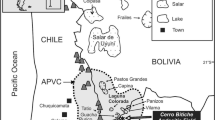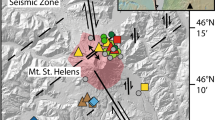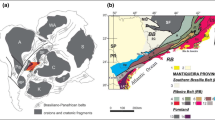Summary
In this paper we present what is, to the best of our knowledge, the first comprehensive study of clinopyroxenes and plagioclases contained in the flows of the Grande Ronde Basalt member of the Columbia River Basalt Group (northwestern USA). The rocks have MgO(wt%)<6%, and trace amounts of Cr and Ni. About 56% of extracted solid containing normative clinopyroxene and plagioclase explains the liquid line of descent from the more mafic sample (MgO wt%=5.89) to the most evolved. The most ubiquitous phases in the basalts are plagioclase and augite. Ilmenite and magnetite are accessories in all rocks. Olivine is present in small amount only in one sample (RT 89-7). Based on principles of Ca–Na plagioclase–liquid exchange, estimates of pre-eruptive magmatic water are < 2.4 wt%. From clinopyroxene–liquid equilibria, calculated pressures and temperatures of ascending magmas are between 1 atm and 0.617 GPa, and 1068 °C and 1166 °C, respectively. Compositions of magnetite–ilmenite pairs and olivine–clinopyroxene–oxide assemblages yield post-eruptive oxygen fugacities of ΔNNO=−1.923, and one pre-eruptive value of ΔNNO=− 2.455. A simple model of asthenospheric melting and magma ponding in the lower crust fits the physical parameters.
Similar content being viewed by others
Author information
Authors and Affiliations
Electronic supplementary material
Rights and permissions
About this article
Cite this article
Caprarelli, G., Reidel, S. Physical evolution of Grande Ronde Basalt magmas, Columbia River Basalt Group, north-western USA. Mineralogy and Petrology 80, 1–25 (2004). https://doi.org/10.1007/s00710-003-0017-1
Received:
Accepted:
Issue Date:
DOI: https://doi.org/10.1007/s00710-003-0017-1




